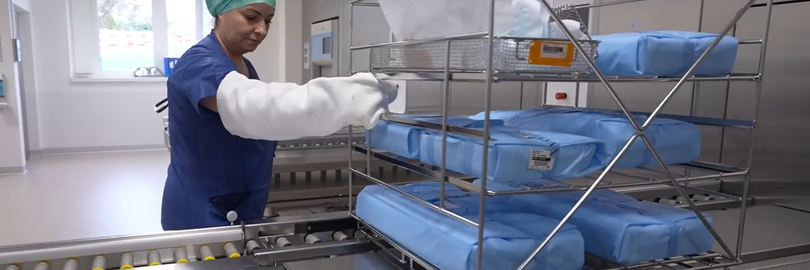Healthcare associated infections (HAIs) remain a major global concern. According to the World Health Organization, approximately 1 in 10 patients worldwide acquires a HAI during their hospital stay.[1] These infections, which affect patients in addition to the illness for which they are being treated, should be minimized as far as possible through preventive measures. In cooperation with Getinge, Swiss hospital Spital Limmattal has therefore redesigned its in-house sterile processing unit for medical devices (CSSD). Today, the optimized sterilization department meets the highest quality standards and is also certified to reprocess medical devices for third parties.
Infections cost money. Central sterilization is the first step toward effective infection prevention in hospitals.
Lorenza Zanotti , Head of Surgical Operations and Central Sterile Supply Department at Spital Limmattal, Switzerland
“At the time, we had three key objectives: to rebuild our CSSD, to integrate specialized reprocessing for flexible endoscopes, and to implement batch traceability — ideally from a single source. That’s why we chose Getinge,” adds Dominik Lacher, Head of Medical Technology at Spital Limmattal.
Increasing patient safety with complete traceability
The sterile supply management system T-DOC ensures complete traceability of instruments and endoscopes, optimized use of OR resources, and continuous quality assurance. “T-DOC was a significant step forward for us. It allows us to fully trace any instrument we release, which significantly increases patient safety,” explains Katerina Iagrossi, Co-Head of CSSD at Spital Limmattal.
The solution also supports daily routines. The system allows for so-called triggers to be set, reminding staff of specific process steps. “You can imagine it like a kind of pop-up window that appears when I scan a product. It reminds me to carry out a particular routine check or disassemble a specific device,” says Tsering Nangtsang, Process Lead at CSSD at Spital Limmattal.
T-DOC is a dynamic system that evolves along with regulatory requirements. For example, if Swissmedic issues a new regulation, it can be easily implemented into the system.
Brigitte Sawatzki, Co-Head of CSSD at Spital Limmattal.
Special focus on endoscope reprocessing – Performed in the CSSD
Every day, Spital Limmattal reprocesses around 45 endoscopes from its own departments and approximately 15 external endoscopes from specialist clinics. The challenge in endoscope reprocessing lies in the different types of devices, each with its own specific cleaning requirements. This means staff must be thoroughly trained in various workflows.
“As a provider, we support users in this demanding routine by tagging each endoscope,” says Brice Djoumatchoua, Sales Consultant Switzerland at Getinge.
“Every RFID tag (Radio Frequency Identification) is machine-readable and contains information about the device type and the corresponding reprocessing protocol, which the machines then carry out automatically. The key is to always listen to the needs of the staff. These change processes are major challenges — even for experienced teams. They take time and can’t simply be implemented plug and play.”
Because when it comes to ensuring the safety of patients and staff, well-trained CSSD personnel are absolutely essential.
